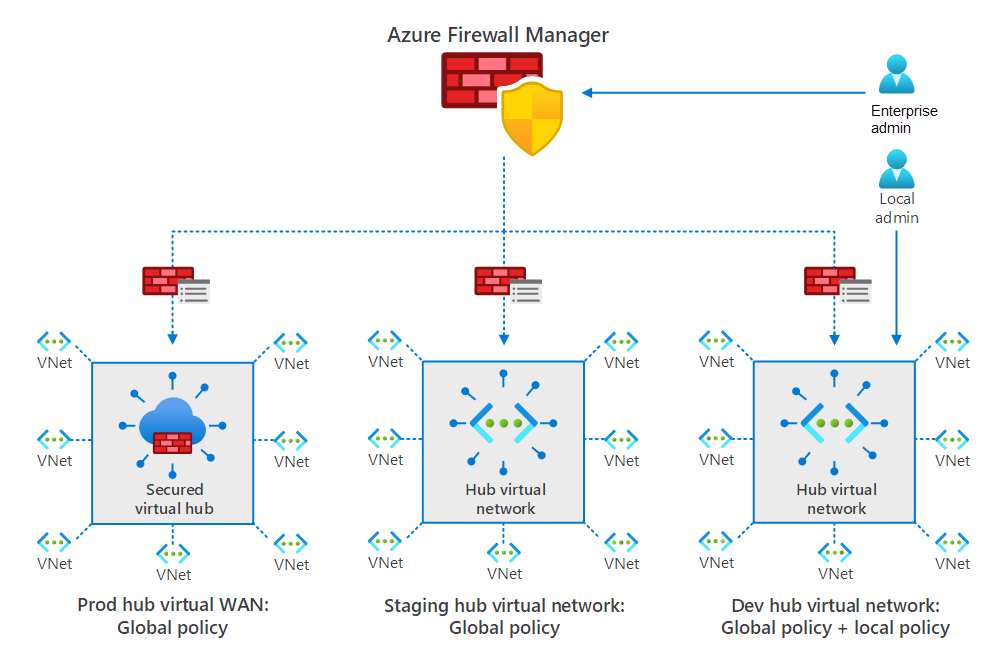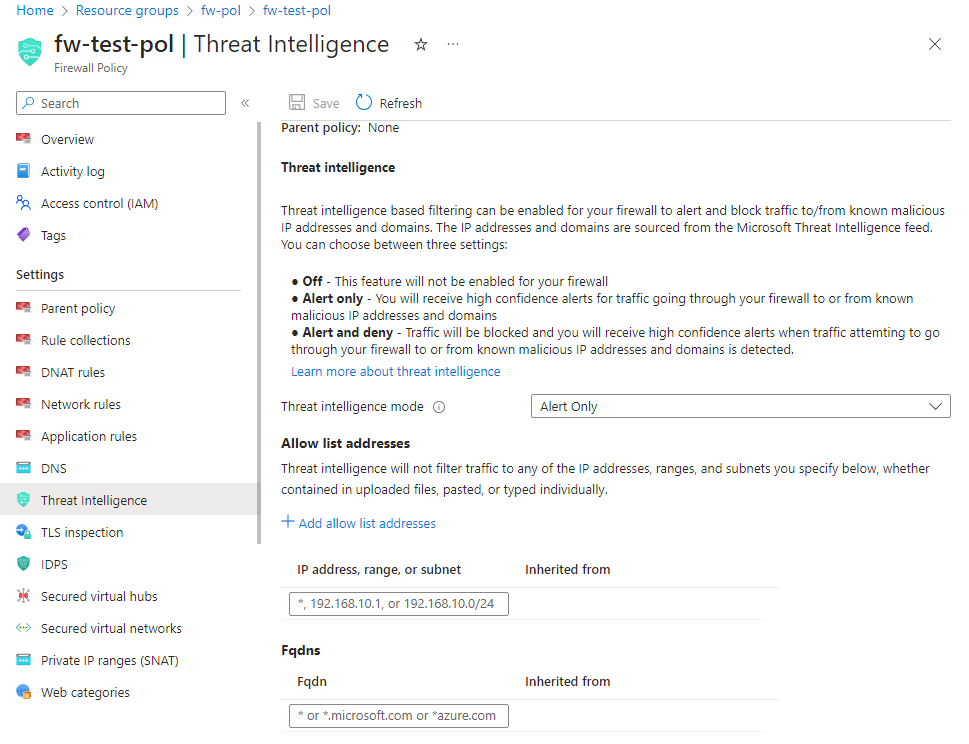How Azure Firewall Manager works
In this unit, we discuss how Firewall Manager works and what tasks you can accomplish by using it. We also examine how firewall policy rules work. As previously described, a policy is the fundamental building block of Firewall Manager. You create policies and associate them with Azure Firewall instances in secured virtual hubs or hub virtual networks.
The following diagram displays a typical configuration. It includes an enterprise administrator who is creating and associating policies at the top level. These policies are associated with both a secured virtual hub and two hub virtual networks. A local admin can also configure and associate policies with one of the hub virtual networks.

Azure Firewall policies consist of rules and settings that control traffic in protected resources. In this unit, you learn about:
- Azure Firewall policies, rules, and threat intelligence settings.
- Rule processing.
- Tasks you can perform with Firewall Manager.
What are Azure Firewall policy rules?
The following table describes the Azure Firewall policy rule collections and settings.
| Rule collection or setting | Description |
|---|---|
| Threat Intelligence Settings | Enables Azure Firewall policy filtering based on threat intelligence, alerting you to potentially malicious traffic. It also allows you to deny traffic from and to IP addresses and domains that are known to be malicious. |
| NAT rule collection | Enables you to configure Azure Firewall Destination Network Address Translation (DNAT) rules. These rules translate and filter inbound internet traffic to your Azure subnets. |
| Network rule collection | Manages non-HTTP/S traffic flowing through the firewall. |
| Application rule collection | Manages HTTP/S traffic flowing through the firewall. |
First you must decide which rules you need to manage your traffic. Then you use Firewall Manager to create and configure Azure Firewall policies containing these rules, as the following graphic depicts.
How rules are processed
In reality, a NAT rule is a routing rule that directs traffic from public to private IP addresses in your Azure resources. When a firewall processes a policy's defined rules, it's the network and application rules that determine whether the traffic is allowed. The following process describes how these rules are processed against traffic:
Threat intelligence rules are processed before NAT, network, or application rules. When you establish these rules, you can configure one of two behaviors:
- Alert when rule is triggered (default mode).
- Alert and deny when rule is triggered.
NAT rules are processed next and determine inbound connectivity to specified resources in your virtual networks.
Note
If a match is found, an implicit corresponding network rule to allow the translated traffic is added.
- Network rules are applied next. If a network rule matches the traffic, that rule is applied. No other rules are checked.
- If no network rules match and the traffic is HTTP/S, application rules are applied.
- If no application rule matches, traffic is compared with the infrastructure rule collection.
- If there's still no match for the traffic, the traffic is implicitly denied.
Note
Infrastructure rule collections define fully qualified domain names (FQDNs) that are allowed by default. These FQDNs are specific to Azure.
Use Firewall Manager
Firewall Manager enables you to:
- Define rules for traffic filtering across multiple Azure Firewall instances in secured virtual hubs and hub virtual networks.
- Associate an Azure Firewall policy with new or existing virtual networks. This association enforces consistent firewall policies across multiple hub virtual networks.
- Associate an Azure Firewall policy or a Security Partner Provider with new or existing virtual hubs. This association enforces consistent security and routing policies across multiple hubs.
- Associate a Web Application Firewall policy to an application delivery platform (Azure Front Door or Azure Application Gateway).
- Associate your virtual networks with a DDoS protection plan.
In the following graphic, an administrator is deploying a firewall with a firewall policy for an existing virtual network.

